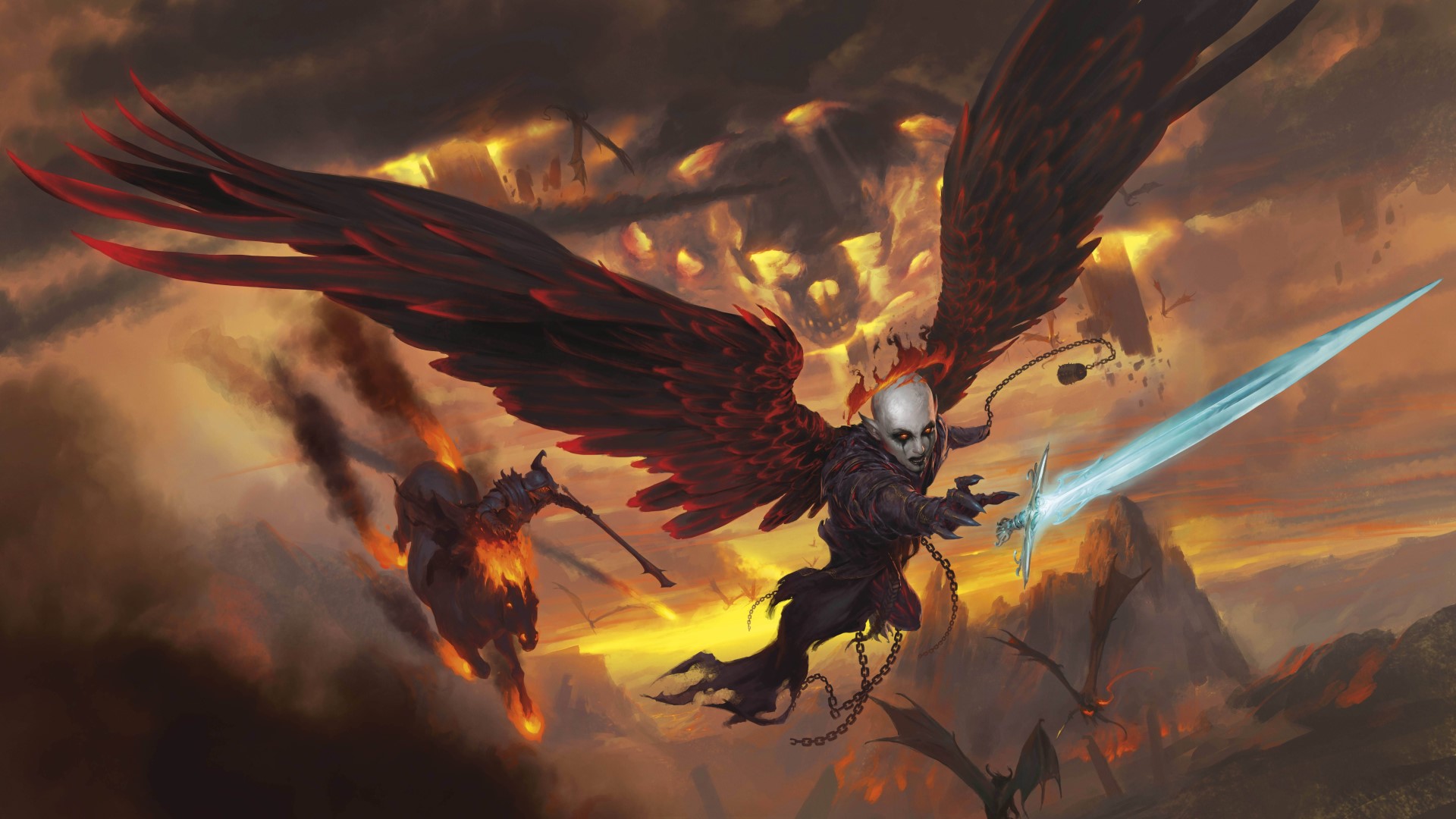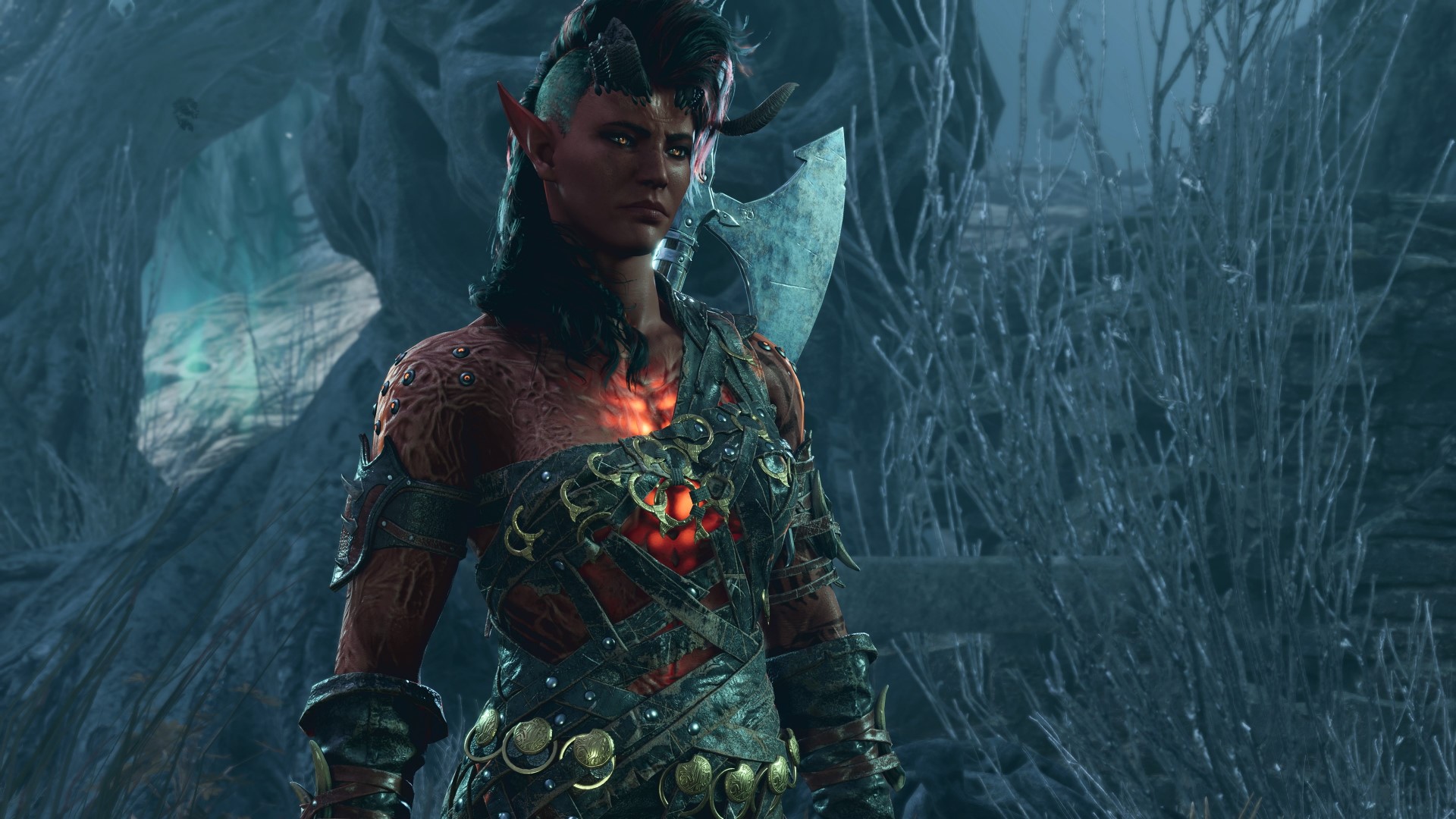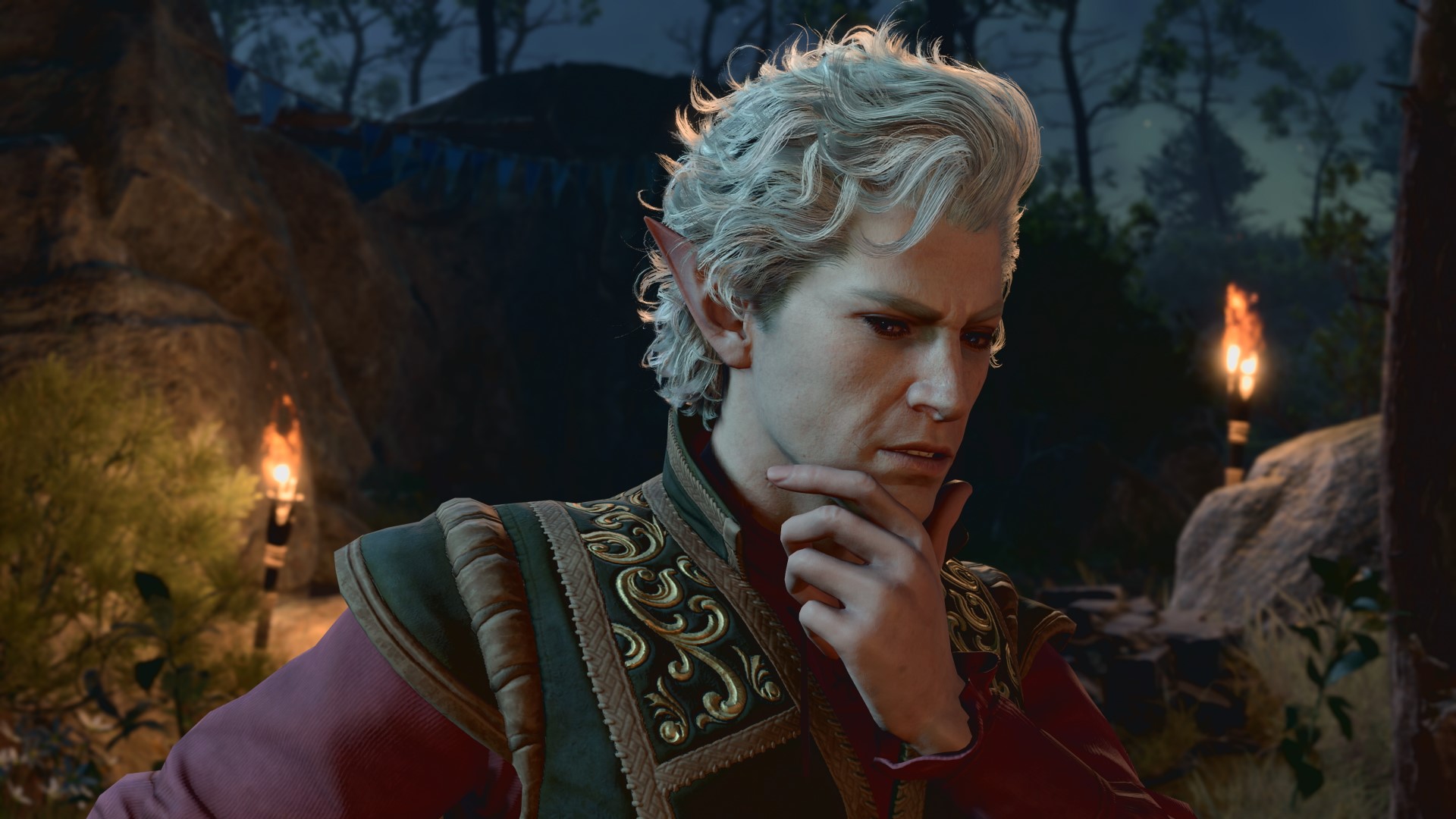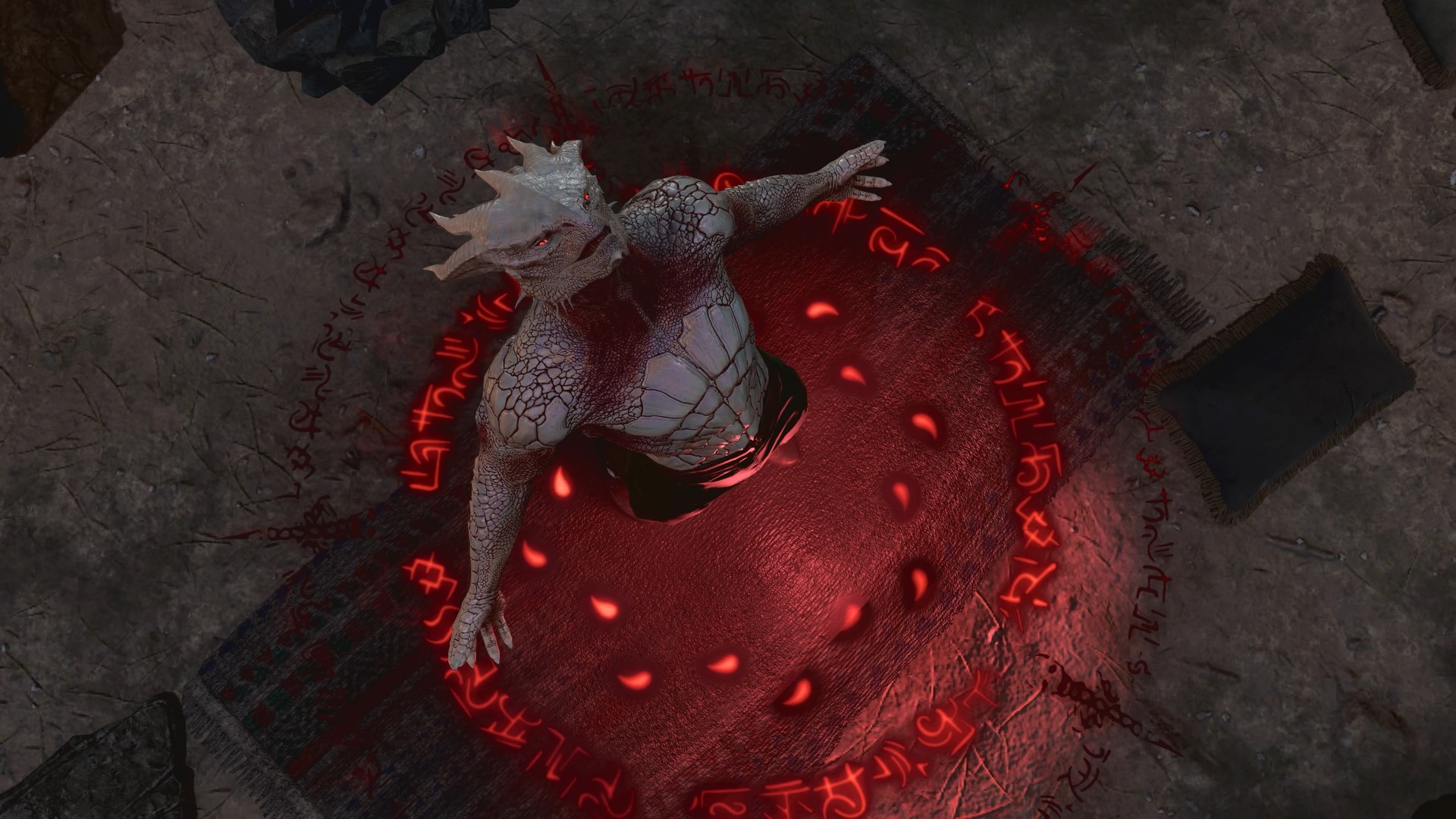
Glorious as they are, the worlds of Dungeons & Dragons carry with them an intimidating amount of lore and baggage. However, Baldur’s Gate 3 does a fantastic job of offering necessary exposition - though that might be just what you’d expect from one of the best RPGs out there. What’s clear from the outset of Larian Studios’ blockbuster RPG, however, is that the roots of the game world run far deeper than can possibly be explored, even in 100 hours of play.
Baldur’s Gate 3 takes place in the Forgotten Realms, perhaps the most famous Dungeons & Dragons setting; a melting pot of years’ worth of fantasy tropes, intermingling storylines, and supernatural drama. For many Baldur’s Gate 3 will be their first step into this intimidating but rewarding cosmos, but for those looking to delve further into the mysteries and wonders of the Forgotten Realms, there are a wealth of tabletop adventures that are poised to whet your appetite. And this is where Baldur's Gate: Descent into Avernus comes in. This campaign for the Dungeons & Dragons tabletop RPG is not only 256 pages of top-tier dark fantasy adventure, but is also an explicit prequel to Baldur’s Gate 3, setting up threads and themes that pay off across Larian’s RPG.
Avernus is a cross between a Hieronymus Bosch painting and Mad Max: Fury Road
Written by Chris Perkins and a team of genre veterans, Descent into Avernus has the players attempt to save the city of Elturel which has fallen into hell as a result of a mysterious pact. Avernus, the titular first level of hell, is a bleak and chaotic cross between a Hieronymus Bosch painting and Mad Max: Fury Road - not a great place to relax, but definitely a suitably dramatic backdrop for a grand adventure reminiscent of Diablo 4’s grim gothic horror.
Descent into Avernus mirrors and compliments the Baldur’s Gate 3 experience. Though played with pen and paper rather than processors and graphics cards, the story almost rhymes with Baldur’s Gate 3. Even character creation strongly encourages players to invent troubled pasts for their characters, much like the roster of companions in Larian’s own Dungeons & Dragons adventure.
Backstory blues

As well as offering a rewarding adventure in its own right, Descent into Avernus shines a light on significant plot threads from Baldur’s Gate 3, as any good prequel should.
Minor spoilers follow for Baldur’s Gate 3.
Baldur’s Gate 3 companions Wyll and Karlach can trace their tragic backstories to the events of Descent into Avernus. As an urchin on the streets of Baldur’s Gate, Karlach was sold into slavery to fight in the Blood War - an ongoing battle between Demons and Devils that engulfs Avernus in perpetual conflict. Here, she was pressed into service by Zariel, a fallen angel and principal antagonist of Descent into Avernus. Karlach spent 10 years fighting Zariel’s wars in a conflict stoked by the fall of the city of Elturel.
Wyll’s backstory is also strongly linked to events in Descent into Avernus. His father, Duke Ulder Ravengard, is a major NPC in the adventure, who found himself trapped in Elturel as the city fell. It was also a servant of Zariel with whom Wyll formed the pact that acts as the source of his Warlock powers. Mizora, Wyll’s patron, is a scheming succubus whose own motivations and agendas are inextricably tethered to goings on in Avernus.
The events of Descent into Avernus also have a larger scale effect on Baldur’s Gate 3’s plot
The events of Descent into Avernus also have a larger scale effect on Baldur’s Gate 3’s plot. For instance, the Tiefling refugees the players encounter in the game’s first act are refugees from the fall in Elturel. In fact, some of them even accompanied Zariel during her crusade into hell and bore witness to the angel’s eventual fall. These “Hellriders” soon turned tail and abandoned Zariel. The leader of these refugees, Zevlor, was a former commander of the organization and can open up to the player about his role in the crusade if they play their cards right.
Choices & conundrums

Despite offering valuable insight into some of the events of Baldur’s Gate 3, Descent into Avernus stands on its own two feet as one of the strongest pre-written D&D campaigns in the history of the game.
Mirroring Baldur’s Gate 3’s own strengths in weaving multiple narratives, Descent into Avernus offers branching storylines full of difficult player choices and moral conundrums. Much like the threat of the Absolute cult in Larian’s RPG, the threat of the fallen angel Zariel casts a long shadow over the campaign, addinga constant sense of dread and unease.
It’s a classic question: do the ends justify the means?
Descent into Avernus encourages players to consider how willing they might be to treat with the forces of hell, offering comprehensive rules for pacts with devils. Much like Baldur’s Gate 3’s own Lovecraftian tadpole parasites, players in Descent into Avernus have to consider the extent to which they’re comfortable channeling the evil powers to which they now have access. It’s a classic conundrum: do the ends justify the means?

This question looms large when it comes to Zariel herself. Can the fallen angel be redeemed? Was she right to fall to evil so as to better protect the world from chaotic forces that would see it destroyed? Is it even right to offer her the chance at redemption? Using fantasy as a medium through which players can wrestle with these sorts of quandaries is one of the timeless strengths of Dungeons & Dragons - a quality Larian took great care to emulate with Baldur’s Gate 3.
However, to play Descent into Avernus, you’ll need an experienced Dungeon Master (part referee, part guide, for those uninitiated) and a group of other players. This is quite the undertaking, and nobody would blame you for opting for the simpler alternative of sticking with Baldur’s Gate 3’s more hassle-free storytelling. However, if the stars align and you can find a suitable group, Descent into Avernus will help you get even more out of Baldur’s Gate 3 while offering a grand adventure all of its own.
Looking to get the most out of Baldur’s Gate 3? Our assessment of the many Baldur’s Gate 3 classes has you covered. Alternatively, you can learn how to change classes in Baldur’s Gate 3 altogether with our handy guide.
!["[T]he First and Fifth Amendments Require ICE to Provide Information About the Whereabouts of a Detained Person"](https://images.inkl.com/s3/publisher/cover/212/reason-cover.png?w=600)






